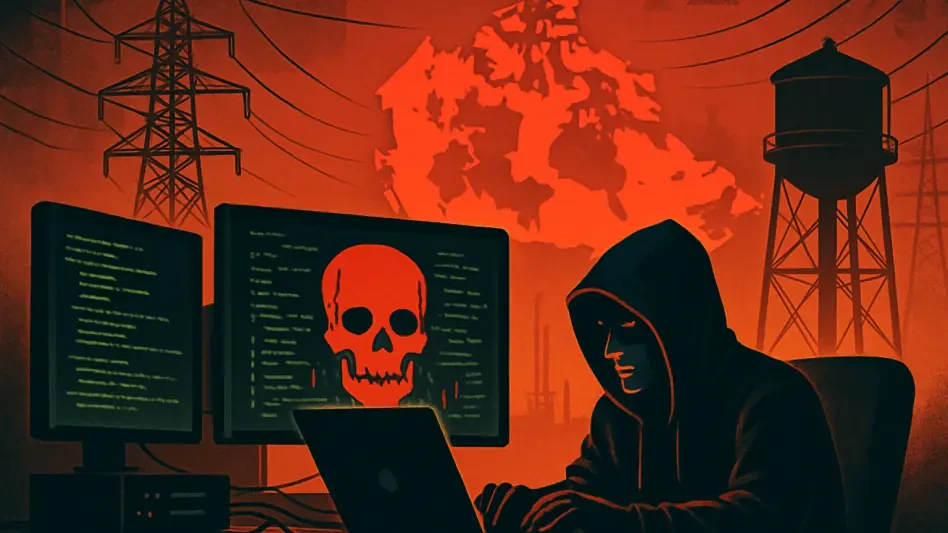In an increasingly digitized business environment, the recent cyberattack on GlobalLogic, a Hitachi-owned digital engineering powerhouse, underscores a chilling reality: even the most robust enterprise systems are not immune to sophisticated ransomware threats. Orchestrated by the notorious Clop ransomware group, this breach exploited a zero-day vulnerability in Oracle E-Business Suite, affecting not only GlobalLogic but also a wide array of Oracle customers worldwide. With sensitive data of over 10,500 GlobalLogic employees compromised, including Social Security numbers and bank details, this incident highlights the escalating risks facing global markets. The audacity of Clop’s demands, reportedly reaching up to $50 million, signals a critical challenge for industries reliant on enterprise software.
This market analysis aims to dissect the implications of the Clop ransomware attack, focusing on its impact on cybersecurity trends and enterprise software vulnerabilities. By examining current patterns and projecting future risks, the goal is to provide actionable insights for businesses navigating this turbulent landscape. The importance of this analysis lies in understanding how such breaches reshape market dynamics, influence investment in security solutions, and drive regulatory changes across sectors.
Deep Dive into Market Trends: Ransomware’s Evolution and Enterprise Vulnerabilities
Tracking the Rise of Sophisticated Cyber Threats
The cybersecurity market is witnessing a rapid evolution of ransomware tactics, with groups like Clop leading the charge. Unlike early ransomware models that focused solely on encrypting systems for ransom, modern variants employ a double extortion strategy—stealing data and threatening leaks unless payments are made. Clop, active since at least 2019, has shifted toward targeting enterprise platforms that house vast troves of sensitive information. This trend indicates a growing market for stolen data on the dark web, pushing cybercriminals to exploit high-value targets. The attack on Oracle E-Business Suite exemplifies how ransomware groups capitalize on systemic weaknesses, affecting multiple industries simultaneously.
Market data suggests that ransomware attacks have surged by over 30% annually since 2025, with enterprise software providers becoming prime targets due to their widespread adoption. This growth correlates with increasing ransom demands, as seen in Clop’s multi-million-dollar ultimatums. The financial burden on affected companies often extends beyond ransom payments to include legal fees, system recovery, and reputational damage, creating a ripple effect across supply chains. As a result, the cybersecurity insurance market is expanding, with premiums rising to account for heightened risks.
A significant driver of this trend is the exploitation of zero-day vulnerabilities—flaws unknown to vendors at the time of attack. The breach at GlobalLogic, detected on October 9 after initial access as early as July, reveals a critical lag in threat detection. This delay amplifies market concerns about the adequacy of current security protocols, pushing demand for advanced monitoring tools and real-time analytics. Businesses are now compelled to reassess their reliance on third-party software, highlighting a shift toward in-house security solutions.
Enterprise Software: A Double-Edged Sword in Digital Markets
Enterprise platforms like Oracle E-Business Suite are cornerstones of modern business operations, supporting everything from human resources to financial management. However, their ubiquity makes them lucrative targets for cybercriminals, as a single breach can yield data from hundreds of organizations. The Clop attack exposed not just GlobalLogic but also entities like Envoy Air, a subsidiary of American Airlines, demonstrating the interconnected vulnerabilities within enterprise ecosystems. This incident has sparked a market reevaluation of trust in large-scale software providers.
Analysts project that spending on enterprise security patches and updates will increase by 25% from 2025 to 2027, driven by the need to address systemic flaws. Oracle’s release of a patch on October 4 to mitigate the exploited vulnerability signals a reactive rather than proactive market stance, raising questions about vendor accountability. The complexity of Clop’s multi-pronged approach, exploiting multiple weaknesses, further complicates the market’s response, as organizations struggle to keep pace with evolving attack vectors. This dynamic fuels growth in the managed security services sector, as companies outsource threat mitigation to specialized firms.
The broader market implication is a potential slowdown in digital transformation initiatives. Businesses may hesitate to adopt cloud-based enterprise solutions, fearing exposure to similar attacks. This caution could reshape software-as-a-service (SaaS) market growth, with providers facing pressure to integrate robust security features as a competitive differentiator. Meanwhile, regulatory bodies are tightening data protection standards, likely increasing compliance costs for software vendors and their clients over the next few years.
Future Projections: Ransomware as a Persistent Market Disruptor
Looking ahead, the ransomware threat landscape is poised to intensify, with attackers leveraging emerging technologies like artificial intelligence to identify vulnerabilities faster. Market forecasts indicate that supply chain attacks, targeting interconnected systems, will become a dominant strategy for groups like Clop. This shift suggests a growing need for zero-trust architecture—a security model that assumes no user or system is inherently trustworthy—projected to see adoption rates double by 2027. Industries such as finance, healthcare, and manufacturing, which rely heavily on enterprise software, are expected to be at the forefront of this transition.
Another projection is the professionalization of ransomware groups, operating with business-like structures that include specialized roles for hacking and negotiation. This trend will likely drive up the sophistication of extortion tactics, with public shaming via data-leak sites becoming more prevalent. The market for cybersecurity training and simulation tools is anticipated to grow in response, as organizations seek to prepare employees for phishing and social engineering attempts. Investments in these areas are critical to mitigating the human error factor, often a gateway for ransomware infiltration.
Geopolitical factors also play a role in shaping future market dynamics. With ransomware groups often linked to regions with lax cybercrime enforcement, international collaboration on cybersecurity policies is expected to gain traction. Governments may impose stricter penalties for delayed breach disclosures, as seen in the months-long detection lag with GlobalLogic. Such regulatory shifts could create a bifurcated market, where compliance-ready firms gain a competitive edge, while others face fines and reputational setbacks. The overall trajectory points to cybersecurity becoming a core component of corporate strategy across all sectors.
Reflecting on the Past: Strategic Takeaways for Market Resilience
Looking back, the Clop ransomware attack on Oracle and GlobalLogic served as a pivotal moment in exposing the fragility of enterprise software markets. It revealed how deeply embedded vulnerabilities could disrupt operations on a global scale, with financial and reputational consequences that lingered long after the breach was contained. The incident underscored the urgent need for markets to prioritize proactive threat detection over reactive measures, as delays in identifying intrusions amplified the damage.
Moving forward, businesses must consider integrating layered security frameworks, combining encryption, regular audits, and employee training to build resilience. Markets should also push for stronger vendor-client collaboration, ensuring timely patches and transparent communication about potential risks. Investing in emerging technologies like AI-driven threat intelligence could provide an edge against sophisticated attacks, while fostering a culture of cybersecurity awareness remains paramount.
Ultimately, the lessons from this breach pointed toward a future where cybersecurity was not just a technical necessity but a market differentiator. Companies that adapted by embedding robust defenses into their operational DNA gained trust and stability, while those that lagged risked obsolescence. The path ahead demanded innovation, vigilance, and a collective commitment to safeguarding digital ecosystems against the ever-evolving specter of ransomware.








